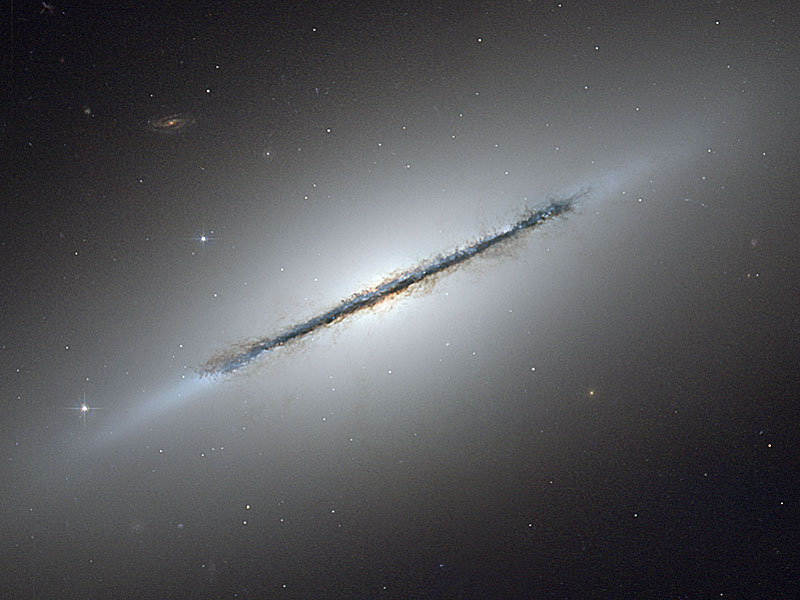
최대 해상도입니다.
이 파일은 공용 저장소에 있으며, 다른 프로젝트에서 사용하고 있을 가능성이 있습니다.
해당 파일에 대한 설명이 아래에 나와 있습니다.
Summary
Edge-On Galaxy NGC 5866
Credit: NASA, ESA, and The Hubble Heritage Team (STScI/AURA); Acknowledgment: W. Keel (U. Alabama)
Explanation: Why is this galaxy so thin? Many disk galaxies are actually just as thin as NGC 5866, pictured above, but are not seen edge-on from our vantage point. One galaxy that is situated edge-on is our own Milky Way Galaxy. Classified as a lenticular galaxy, NGC 5866 has numerous and complex dust lanes appearing dark and red, while many of the bright stars in the disk give it a more blue underlying hue. The blue disk of young stars can be seen extending past the dust in the extremely thin galactic plane, while the bulge in the disk center appears tinged more orange from the older and redder stars that likely exist there. Although similar in mass to our Milky Way Galaxy, light takes about 60,000 years to cross NGC 5866, about 30 percent less than light takes to cross our own Galaxy. In general, many disk galaxies are very thin because the gas that formed them collided with itself as it rotated about the gravitational center. Galaxy NGC 5866 lies about 44 million light years distant toward the constellation of the Dragon (Draco).
Copyright status
This image is public domain because it was first published by the National Aeronautics and Space Administration
Source
http://antwrp.gsfc.nasa.gov/apod/ap060612.html
파일 역사
날짜/시간 링크를 클릭하면 해당 시간의 파일을 볼 수 있습니다.
| 날짜/시간 | 섬네일 | 크기 | 사용자 | 설명 |
|---|
| 현재 | 2007년 4월 12일 (목) 14:45 |  | 800 × 600 (77 KB) | Ashcraft | Edge-On Galaxy NGC 5866 Credit: NASA, ESA, and The Hubble Heritage Team (STScI/AURA); Acknowledgment: W. Keel (U. Alabama) Explanation: Why is this galaxy so thin? Many disk galaxies are actually just as thin as NGC 5866, pictured above, but are not se |
이 파일을 사용하는 문서
다음 문서 1개가 이 파일을 사용하고 있습니다:

